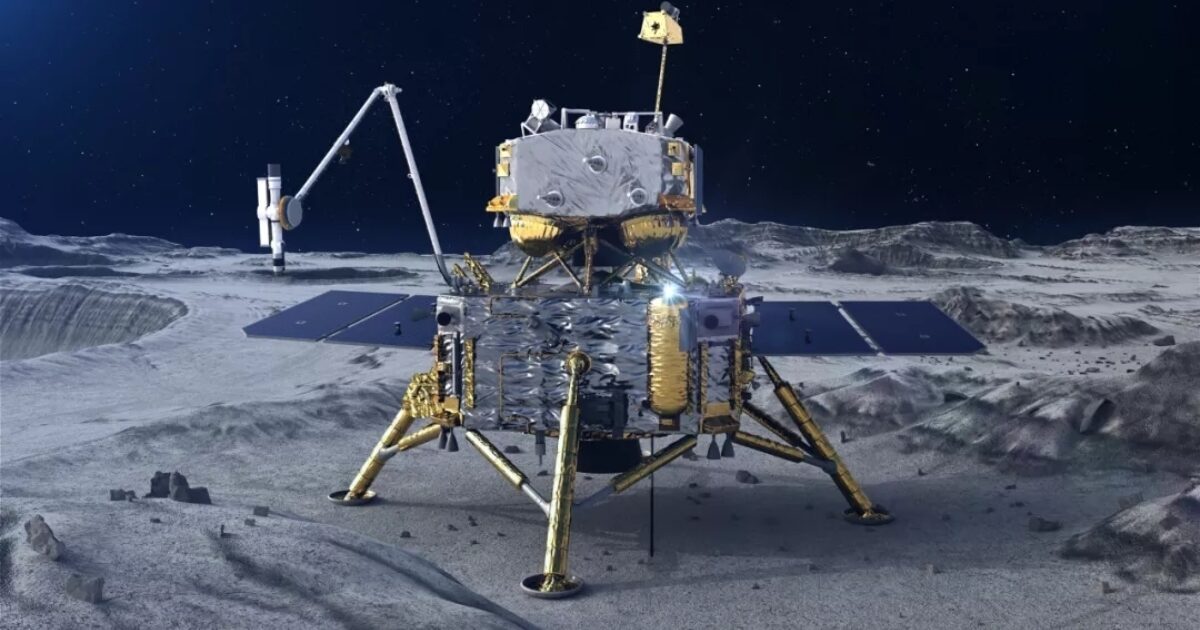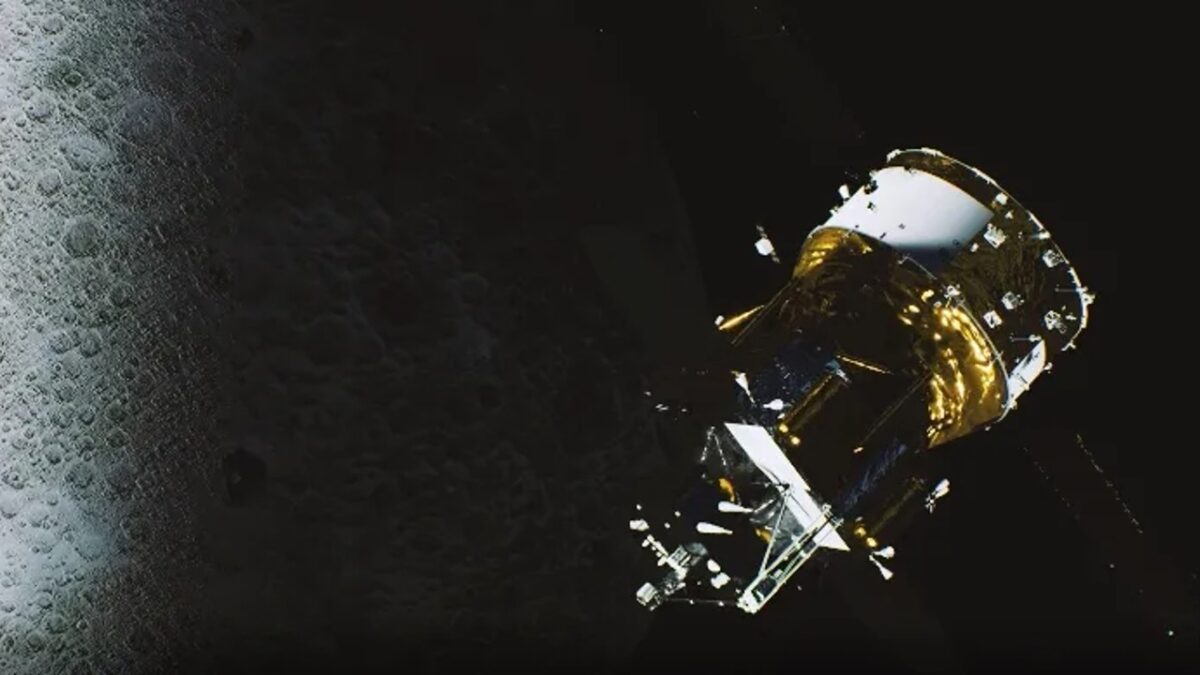China’s Chang’e-6 lunar Probe landed on the far side of the Moon at 06:23 Beijing time on Sunday.
Launched on May 3, the probe landed in the South Pole-Aitken Basin according to the Chinese National Space Administration (CNSA).
The mission’s aim is to collect rocks and other material from this region for the first time in history. The probe will collect ancient rocks from the huge crater on the South pole of the moon which might be the oldest samples ever recovered.
The landing was extremely risky as it was very difficult to communicate with the probe once it was on the far side of the Moon. China achieved this feat for the second time after landing its Chang’e-4 in 2019, showcasing its scientific prowess in the modern space race.

The Lunar Probe
The Chang’e-6 spacecraft was launched from the Wenchang Space Launch Centre and kept orbiting the Moon prior to the commencement of the landing.
Following that, the lander component detached from the orbiter section and managed to successfully land on the far side of the Moon, near the southern pole.
As communication was difficult once the probe was hidden behind the Moon, an autonomous visual obstacle avoidance system was used to automatically detect obstacles with minimal human input. A visible light camera was used to select a safe landing area based on the brightness of the lunar surface, the CNSA was reported to claim by the state-run Xinhua news agency.
After making contact with the Lunar surface, the lander will have 14 hours to drill, excavate and retrieve 2 kg of material, aiming to be the first one to ever have done so on the far side. This will be even more challenging compared to Chang’e-5 which had 21 hours to do so in 2020, the key difference being, it landed on the near side of the Moon.
The significance
James Carpenter, the head of the European Space Agency’s lunar science office, said that that evidence from the material collected by the Apollo mission from the Moon’s near side suggest that the South-Pole Aitken Basin on the far side was most likely caused by a period of heavy bombardment of the entire solar system.
However, there remains some controversy about whether this event really took place and how it might have affected the Earth and the Moon, something Carpenter hopes will be resolved with the new samples Chang’e-6 will attempt to recover.
While CNSA claims that it has improved the efficiency of its drilling and excavation systems compared to 2020, the sampling phase still remains as one of the most vulnerable phases of the operation.
Chang’e-5 managed to only return with 1.73 kg of lunar samples instead of the planned 2kg, as it was only able to dig a hole 1 meter deep, rather than the planned 2 meters. This occurred due to it encountering an impenetrable layer beneath the surface during the drilling process.
The research
The probe is expected to land in China’s Inner Mongolia around June 25.
During the journey, payloads from French, Italian and Pakistani research institutes will collect data pertaining to the conditions in and around the lunar surface.
Competing with the United States to build a lunar outpost in the next decade, China has showcased the growing global significance of its space programme.
Carpenter explains that there was “extremely strong” collaboration between European and Chinese scientists when analyzing the samples brought back by Chang’e-5. He hopes that the same will happen when analyzing the samples of Chang’e-6 and all upcoming missions.
Through the successful landing, the CNSA has celebrated its growth and stepped onto the global limelight for its achievements.




1 Comment
Pingback: On June 25, Chang'e 6 is scheduled to deliver much awaited samples from the lunar far side: Latest - INPAC Times